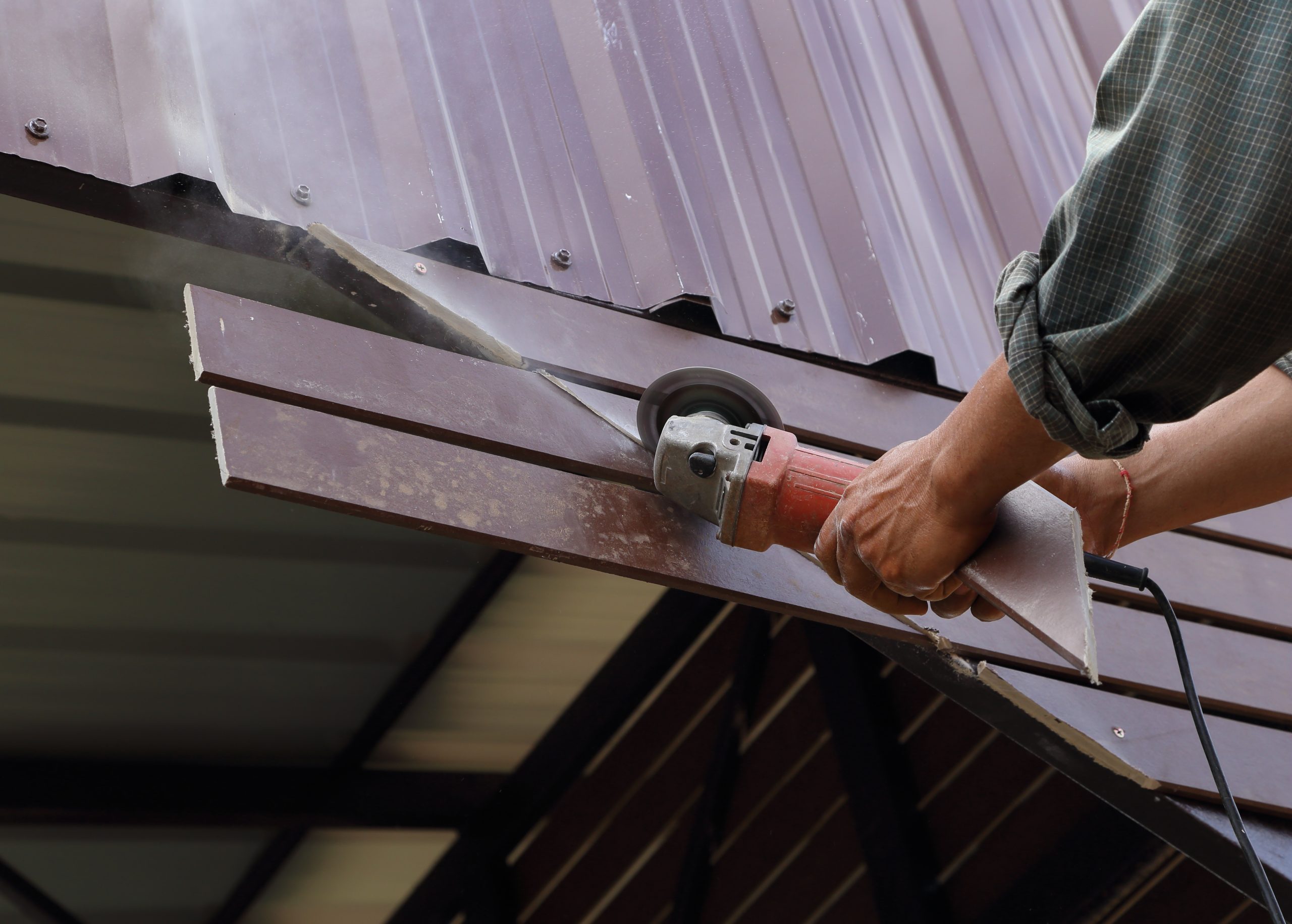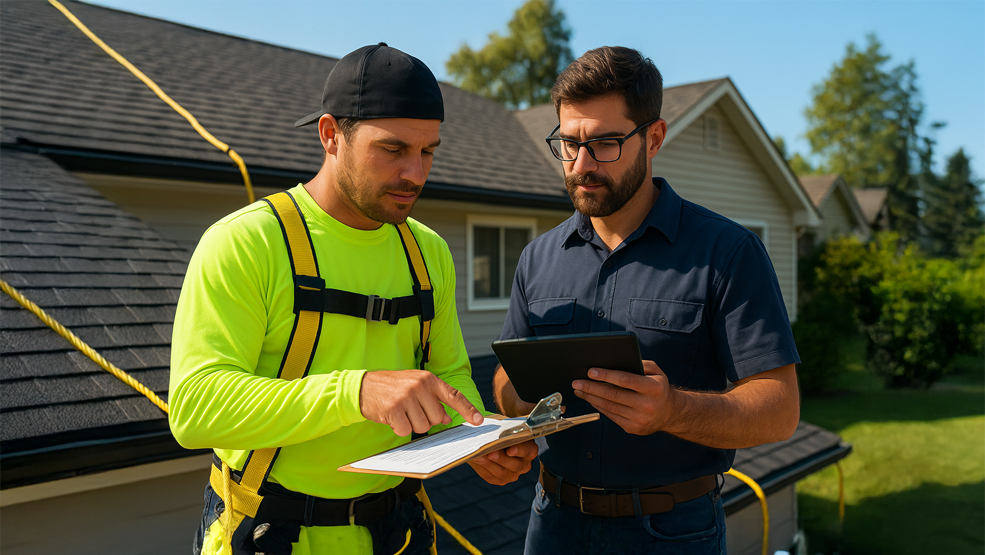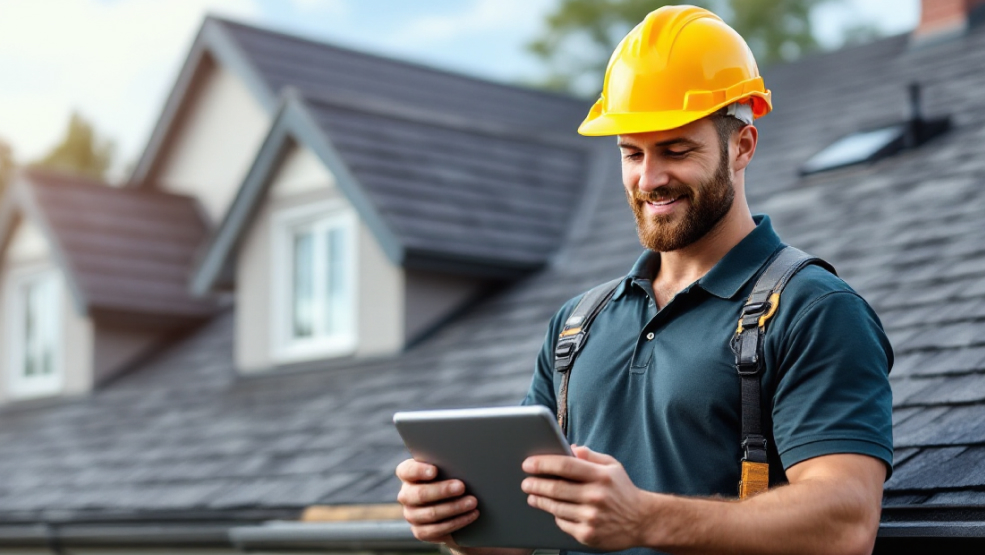Roofing is more than just another construction work; it’s one of the most dangerous vocations in the field. Every day, roofers confront considerable risks because they work at heights on slanted, frequently slippery surfaces. For business owners, the stakes are considerably higher because they are accountable for more than just finishing projects on time. They also have to keep their personnel safe, follow the rules, and limit their liabilities.
That’s where roofing safety gear and a strong safety program come in. The right gear and systems can mean the difference between a safe, efficient project and an avoidable accident. This guide breaks down the risks, regulations, and essential safety equipment every roofing business owner should prioritize.
Why it’s important to get the right roof measurements
Falls are still the most common cause of fatality on construction sites, and roofing plays a big part of that. The numbers are scary:
- In 2023, 421 of the 1,075 construction fatalities were due to falls from elevation—nearly 40% of all deaths in the sector (OSHA).
- Roofers face a fatality rate of 36 deaths per 100,000 full-time workers, making them 10 times more likely to die from a fall than other construction trades (NIOSH).
- Between 2011 and 2017, roofers accounted for 43% of all fatal falls in construction (NIOSH).
- Data shows that over half of workers who died from a fall had no access to fall protection, or failed to use it (CPWR).
For business owners, the effects transcend beyond the obvious one of a tragedy. Injuries and falls raise medical and legal costs, slow down projects, break equipment, and raise insurance prices. One bad thing might ruin your business and your reputation with clients. Roofing safety isn’t a choice, it’s an important investment for your business.
Regulatory & Compliance Obligations
U.S. roofing contractors operate under strict regulations, particularly from OSHA (Occupational Safety and Health Administration). Non-compliance can result in hefty fines, lawsuits, or worse, avoidable accidents.
Here are the essentials every business owner needs to know:
Fall Protection Mandates (29 CFR 1926 Subpart M)
OSHA requires fall protection for all construction work at heights of 6 feet or more. That means any roofing work must include compliant systems.
Employer Responsibilities
You must provide appropriate safety gear, such as harnesses, ladders, and scaffolding. Just as importantly, you’re required to train workers in hazard recognition and safe equipment use.
Edge Protection Standards
Guardrails, warning lines, and safety nets must meet OSHA’s specific height, strength, and installation guidelines. For example, guardrails must be between 39–45 inches tall and withstand a 200-lb force.
Failing to meet these obligations can cost thousands in fines and put lives at risk.
The Safety Controls Hierarchy
Not every safety system is the same. OSHA and NIOSH advocate for a hierarchy of controls, which is a way to get rid of or lower the danger of falls by using different layers of protection:
Stop Falls
Not working at height at all is the safest strategy to avoid a fall. Business owners can buy things like pitch-detection software, drones, or remote measurement instruments to cut down on the time personnel spend on rooftops.
Preventing Falls
When you have to work on the roof, the next step is to prevent it. Guardrails, toe boards, and caution lines are examples of passive devices that keep workers from getting too close to dangerous edges. Active systems, such fall restraint lanyards, keep workers in safe areas.
Arrest of a fall
A Personal Fall Arrest System (PFAS) rescues a worker before they touch the ground if they fall. This comprises full-body harnesses, lanyards, self-retracting lifelines, and anchor points that have been certified to hold 5,000 lbs. When set up correctly, these methods keep free-fall distance to 6 feet or fewer.
Controls for the administration
Policies are important even for the best equipment. This means that there must be site-specific safety plans, safety monitoring, hazard signs, paperwork, and regular training to make sure that safe procedures are followed
Essential Roofing Safety Gear Every Business Owner Should Invest In
Your crews can’t stay safe—or compliant—without the right gear. Here’s the must-have roofing safety equipment, broken down into categories.
Personal Protective Equipment (PPE)
- Hard Hats
Protect against falling tools or debris, a non-negotiable on every site. - Non-Slip, Steel-Toe Boots
Provide secure footing on slopes and guard against punctures. - Gloves & Eye Protection
Essential for handling shingles, metal flashing, and power tools. - High-Visibility Clothing
Keeps workers visible to one another, especially around machinery or traffic.
Fall Protection Gear
- Harnesses: Full-body harnesses with back D-rings are the foundation of fall arrest.
- Lanyards & Lifelines
Shock-absorbing lanyards or self-retracting lifelines minimize fall forces. - Anchorage Point
OSHA requires each anchor to support at least 5,000 lbs per worker.
Worksite Protective Systems
- Guardrails & Toe Boards
Best for flat or low-slope roofs where crews work near edges. - Safety Nets
Catch workers or debris on larger commercial jobs. - Warning Lines & Safety Monitors
Visual boundaries and dedicated observers to warn workers approaching edges.
Access & Tool Management
- Ladders & Scaffolding
Must meet OSHA or EN 131 standards for load and stability. - Tool Tethering
Prevents dropped tools from injuring workers below.
Program & Planning Essentials
- Site-Specific Safety Plans
Document hazards, emergency contacts, fall protocols, and rescue procedures. - Inspection Checklists
Daily gear checks, with formal audits every 3–6 months. - Training Programs
Initial certifications plus regular refreshers to keep crews updated on new gear and standards.
Choosing the Right Roofing Gear for Your Project
Not every project needs the same tools. As the owner of the firm, it’s your job to make sure that the safety gear fits the requirements of the job.
By Roof Pitch
Guardrails, warning lines, and fall restraint systems are all that low-slope roofs need. Steep-slope roofs, on the other hand, need full PFAS (harnesses, lanyards, and lifelines).
By the type of project
For speedy deployment, residential projects usually simply need light, movable systems. But while working on business roofs, group precautions like guardrail systems and safety nets are quite important.
By Quality and Longevity
Always pick gear that is weatherproof, easy to see, and comfortable for workers.
Safety Best Practices for Business Owners
It’s not only about the tools; safety is also about the culture and being consistent. This is how to set the standard:
Regular inspection
Make sure foremen inspect the gear and the site before work starts.
Talks about toolbox
Have short, regular meetings to remind crews of safe practices and talk about recent events.
Documentation and Training
To show that you are following the rules, keep complete records of all training, inspections, and reports of incidents.
Set a good example
Supervisors and owners should wear the right gear and obey the guidelines properly. This sets an example for the rest of the team.
Comparison Table: Fall Protection Systems
| Feature / Use Case | Fall Restraint System | PFAS (Fall Arrest System) | Guardrails / Netting | Warning Line / Safety Monitor |
| Best For | Low-slope, flat roofs | Steep slopes, complex jobs | Group protection, open edges | Supplementary low-slope control |
| Components | Restraint lanyard, anchor | Harness, lanyard, anchor | Rails, toe boards, nets | Lines, flags, personnel |
| Ease of Installation | Moderate | Requires training | May require design/permits | Quick setup |
| Regulatory Notes | OSHA allows, must meet specs | OSHA PFAS rules apply | Guardrail height 39–45 in | Must be paired with other systems |
Better Safe Than Sorry
Roofing is one of the most dangerous jobs in construction, but with the right roofing safety gear, planning, and culture, business owners can dramatically reduce risks. From OSHA-mandated PFAS to practical daily inspections, every layer of protection contributes to saving lives, avoiding costly accidents, and building trust with your crews and clients alike.
Investing in roofing safety equipment isn’t just compliance—it’s smart business. The return is measured in lives saved, projects finished without disruption, and a stronger reputation for professionalism.
Ready to strengthen your roofing safety program? Start by building a site-specific safety plan and equipping your crews with the right gear before your next project.





